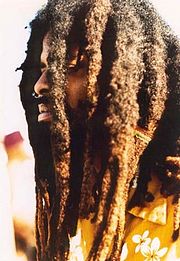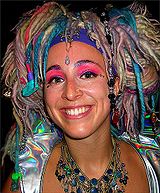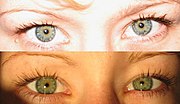
Human Noses Human noses can take many different shapes. Several attempts have been made towards a classification of noses. The following examples are from Nasology by Eden Warwick (pseudonym of George Jabet). This 19th century tract associated nose shapes with character traits in a way akin to phrenology, in a somewhat ironic way, as the booklet was intended to mock the popular but highly controversial subject of phrenology. * Class I: The Roman, or Aquiline nose, which is rather convex, but undulating as its name aquiline imports. * Class II: The Greek or Straight nose, which is perfectly straight * Class III: The Nubian, or Wide-nostrilled nose, wide at the end, thick and broad, gradually widening from below the bridge. The other noses are seen in profile, but this one in full face. * Class IV: The Jewish[1] or Hawk nose, which is very convex, and preserves its convexity like a bow. It is thin and sharp. * Class V: The Snub nose * Class VI: The Turn-up or Celestial nose, with a continuous concavity from the eyes to the tip
Men are normally Darker then the woman of their race.

The highest civilization and culture, apart from the ancient Hindus and Egyptians, are found exclusively among the white races; and even with many dark peoples, the ruling caste or race is fairer in colour than the rest and has, therefore, evidently immigrated, for example, the Brahmins, the Incas, and the rulers of the South Sea Islands. All this is due to the fact that necessity is the mother of invention because those tribes that emigrated early to the north, and there gradually became white, had to develop all their intellectual powers and invent and perfect all the arts in their struggle with need, want and misery, which in their many forms were brought about by the climate. This they had to do in order to make up for the parsimony of nature and out of it all came their high civilization."
The White race is so Different.


- Platinum blond - Pale blond, nearly white; found naturally almost exclusively in children, but occurring rarely among some adults
- Ash blond - usually quite fair, with some ashen (gray) tones
- Sunny blond - Very bright, ranging from almost yellow to light yellow.
- Sandy blond - similar to sand in color
- Golden blond - lighter, with a gold cast
- Strawberry blond - reddish blond
- Bleached blond - hair made blond artificially by bleaching
- Zebra blond - streaked blond and brunette
- Dirty blond - a variety of hair color that mixes lighter blonde with some darker browns giving a dark blonde appearance. Dark Blond
- Golden brown/Dark Blond - darkest shade of blond which sometimes looks light brown and other times dark blond.
- Pool blond - Blond tinted with green due to exposure to copper in swimming pools. There are many terms for this form of blond.
- Honey Blond- Blond with a honey-colored tint. It can be dark blond or light blond.



Prejudice/Discrimination towards redheads
Those whose hair is red, of a certain peculiar shade, are unmistakably vampires. It is significant that in ancient Egypt, as Manetho tells us, human sacrifices were offered at the grave of Osiris, and the victims were red-haired men who were burned, their ashes being scattered far and wide by winnowing-fans. It is held by some authorities that this was done to fertilize the fields and produce a bounteous harvest, red-hair symbolizing the golden wealth of the corn. But these men were called Typhonians, and were representatives not of Osiris but of his evil rival Typhon, whose hair was red.
Blonds are not Dumb ether
two forms of Racism towards Whites
Gray and white hair
Gray hair color typically occurs naturally as people age (see "Effects of aging on hair color", below). For some people this can happen at a very young age
Children born with a certain color may find that it gradually darkens as they grow. Many blond, strawberry blond, light brown, or red haired infants experience this.

Black hair is the darkest and most common color of human hair. Black hair is found in people of all backgrounds and ethnicities. It has large amounts of eumelanin and is less dense than other hair colors. Black hair is known to be the shiniest out of all other hair colors. Sometimes, certain shades of black hair are so dark, they can appear to shine silver-blue in the sun. [1] In English, black hair is usually described as "jet-black" or "raven black". Outside of Europe, many humans have black or dark brown hair. [2] This is likely the original hair color of Homo sapiens, and is found in its greatest distribution in sub-Saharan Africa, Asia, and the pre-Columbian Americas. Among White people, black hair is particularly common in people of Southern European, e.g.: Greek, Spanish, Portuguese, and Italian ancestry. Black hair is less prominent in people from Nordic countries.
Indian woman with black hair
Khoisan woman with black hair
Greek woman with black hair
Japanese man with black hair

Afro







Eye Colour

Blue
Blue eyes contain low amounts of melanin within the iris stroma; longer wavelengths of light tend to be absorbed by the underlying iris pigment epithelium, and shorter wavelengths are reflected and undergo Rayleigh scattering.[5] The type of melanin present is eumelanin.[21] The inheritance pattern followed by blue eyes is considered similar to that of a recessive trait, however it is a polygenic trait (meaning that it is controlled by the interactions of several genes, not just one).[7] Eiberg and colleagues showed in a study published in Human Genetics that a mutation in the 86th intron of the HERC2 gene, which is hypothesized to interact with the OCA2 gene promoter, reduced expression of OCA2 with subsequent reduction in melanin production.[22]
The authors concluded that the mutation may have arisen in a single individual around the Black Sea region 6,000-10,000 years ago, perhaps suggesting that all people with true blue eyes are more closely related. However, blue eyes with brown spots around the pupil are not related to this mutation.[22]
Blue eyes are most common in Poland[23], Ireland[24] [25] , Netherlands[26], Iceland[27] , Austria[28], Sweden[29], Norway[30], Denmark[31], Russia[23], Finland[32], Germany[33], France[34], Estonia[35], and the United Kingdom[36][37] They are also present in Southern Europe, Spain[38], Portugal[39],Italy[40] and the Balkans [41], the Middle East [42] (especially in Israel and Lebanon), India and are also found in Afghanistan. A 2002 study found the prevalence of blue eye color among Whites in the United States to be 33.8% for those born from 1936 through 1951 compared with 57.4% for those born from 1899 through 1905.
Green eyes are the product of moderate amounts of melanin. According to some researchers, green eyes are the result of mutations that change the melanin structure [48] Green eyes are most common in Europe and to a lesser extent in the Middle East, Northern parts of India, Pakistan, and Afghanistan. 88% of the Icelandic population have either green or blue eye color
Gray
Gray eyes have less melanin than blue eyes, even though they are considered a darker shade of blue (like blue-green). They are most common in European Russia, Finland and the Baltic States. Under magnification, gray eyes exhibit small amounts of yellow and brown color in the iris.
A gray iris may indicate the presence of a uveitis. However, other visual signs make a uveitis obvious.
Visually, gray eyes often tend to appear to change between the shades of blue, green and gray. This is said to be influenced by the lighting and the surroundings (such as clothes, makeup, etc.).
The Greek goddess Athena was renowned for having "owl-gray" (in Greek, γλαυκῶπις – glaukōpis) or "sea-gray" eyes
Brown
Brown eyes are predominant in humans[43] and, in many populations, it is (with few exceptions) the only iris color present.[44] It is less common in countries around the Baltic Sea, such as Finland and Estonia. Germany has also shown signs that many people have dark brown eyes.
In humans, brown eyes contain large amounts of melanin (eumelanin) within the iris stroma, which serves to absorb light, particularly at the shorter wavelengths.[5][21] Very dark brown irises may appear at a glance to be black


Red
The eyes of a person with albinism may appear red under certain lighting conditions due the very low quantities of melanin. "True" red eyes also exist in albinistic populations, but are very rare. [62]
The red-eye effect in flash photographs makes the pupils (rather than the irises) appear red. It is not related to eye color.
Violet
The appearance of "violet" eyes is thought to occur from the mixing of red and blue reflections.[63] Some albinos have eyes that appear violet. Violet eyes are a form of blue eyes.


Often, lighter skinned newborns have blue eyes, which change to green, hazel, light brown or dark brown
Height
n the eighteenth and nineteenth centuries, Europeans in North America were far taller than those in Europe and were the tallest in the world.[84] The original indigenous population of Plains Native Americans was also among the tallest populations of the world at the time.[85] Several nations, including many nations in Europe, have now surpassed the US, particularly the Netherlands, and the Scandinavian nations.













No comments:
Post a Comment